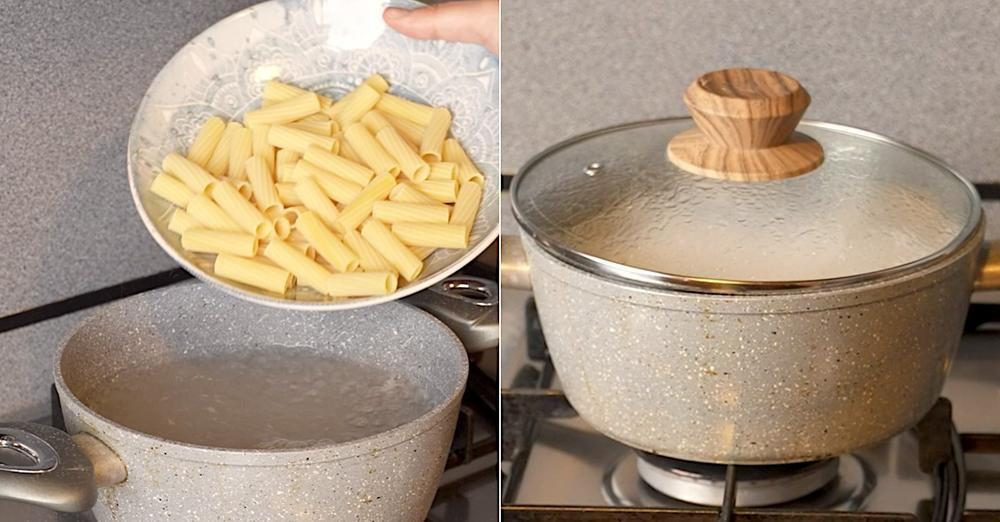Everything You Must Know To Love Cooking Pasta Using The ‘Passive Cooking’ Method
Passive cooking pasta — it might sound like a contradictory term but it does work. Passive cooking pasta is not an age-old method but it produces truly amazing results. Read ahead for everything you need to know about the unusual cooking method that helps you use less fuel and therefore care for the environment.
;)
The passive cooking method was first mentioned a few years ago on a radio program that had guest Kate Heyhoe, the author of Cooking Green: Reducing Your Carbon Footprint in the Kitchen. There, she recommended a trick she called the passive method as a way to use less fuel while cooking pasta to perfection.
What is the passive method, and does it work?
The passive method starts out with the exact instructions as the conventional method: bring a pot of salted water to the boil and then add pasta and then stir. With the passive approach, though, you only boil the pasta for two minutes, then you turn the burner off, cover the pot with a lid, and let the pasta sit in the water for the remaining minutes left. So a six-minute pasta would boil for two minutes and sit for four. This follows that a ten-minute pasta would boil for three minutes and sit for seven minutes to cook.

This shows that the passive cooking method aids the green idea and the green idea here is that a person who wants to prepare pasta will be using less fuel by not having the burner going full whack to keep the water boiling. But this method goes against all the conventional wisdom around cooking pasta, that if it's not kept rapidly boiling in lots of water, it will end up in a mushy, gooey mess. As Lynne Rossetto Kasper said: "My Italian ancestors are flipping in their graves!"
The question that lingers on most minds is if the Passive Cooking Method works. And the most consistent answer has been: Yes! Beautifully.
Most people now use this method every time they need to cook pasta, and they have yet to have any problems with taste or texture. It is recommended to check for doneness a minute or so before the times recommended on the pasta package.
The passive method had not been tried with filled pasta (such as ravioli) or less traditional plates of pasta, such as those made with rice or quinoa, nor has it been tried with whole wheat pasta. But it is worth experimenting with.

It cannot be imagined that the same principles do not apply, and some of the alternative pasta are a little more fragile anyway, so perhaps less time vigorously boiling will be helpful.
The amount of fuel that can be saved cannot be undermined and how much of a difference this makes in the big picture is always very visible.
Probably not a whole lot on both counts. But things add up, and a little less fuel here and there is a good, painless way to start reducing the ‘cook print.'
This method is also helpful for those who have limited space on their stovetops or who cook-off of hotplates, as the pasta pot can be removed from the stovetop, freeing up more room. It might be good for camping, too, where cooking space is often at a premium.
;Resize,width=767;)
;Resize,width=712;)

;Resize,width=712;)
